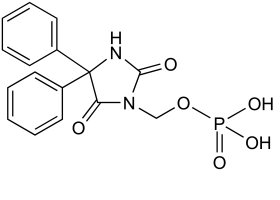Last November, we reported on an error that occurred, in part, because of poor labeling on Cerebyx (fosphenytoin). As you can see (below), the volume of the Cerebyx vial is listed in one area of the label and the strength per milliliter (50 mg PE/mL) is listed in another area. At a quick glance, especially during an emergency, the vial may appear to contain only 50 mg PE. As the following new case shows, serious errors continue to occur with this drug.
A 2-year-old child with seizures was brought to the ED. The physician ordered I.V. Cerebyx, 150 mg (100 mg PE), to halt the seizures. Because most medications used in the ED were drawn from floor stock, pharmacy technicians delivered drugs on verbal request. A technician misread the Cerebyx label and delivered three 10 ml vials (1,500 mg PE total). A nurse also misread the label, assuming that each vial contained 50 mg. She drew up 30 ml (1,500 mg PE) instead of 150 mg (100 mg PE) and handed the syringe to another nurse. The second nurse, believing the proper dose had been diluted, didn't question the large volume. She administered the tenfold overdose to the patient, who died soon afterward. Later, excessive amounts of phenytoin were found in the child's blood.
Twice previously, we'd contacted Cerebyx's manufacturer, ParkeDavis, and we've now offered our assistance again. So far, the company's position is that the labeling is adequate and doesn't need to be changed.
Until a change is made, we believe that Cerebyx is too dangerous to store outside the pharmacy and should be removed from unit stock. If circumstances won't allow that, place each vial in a bag with this note: "This 2 ml (or 10 ml) vial contains the equivalent of 100 mg (or SOO mg) of phenytoin (50 mg PE/ml)."
Although nothing replaces following the five "rights" of medication administration, poor drug labeling is a needless additional risk to patient safety.
Copyright Springhouse Corporation Jul 1998
Provided by ProQuest Information and Learning Company. All rights Reserved



